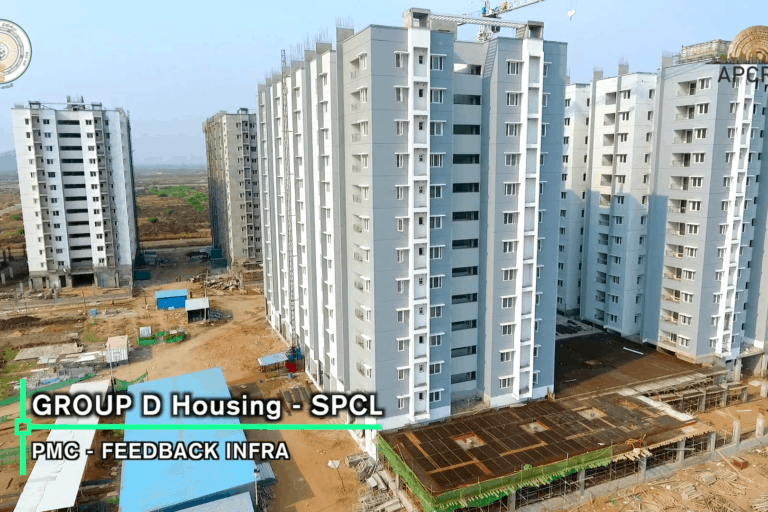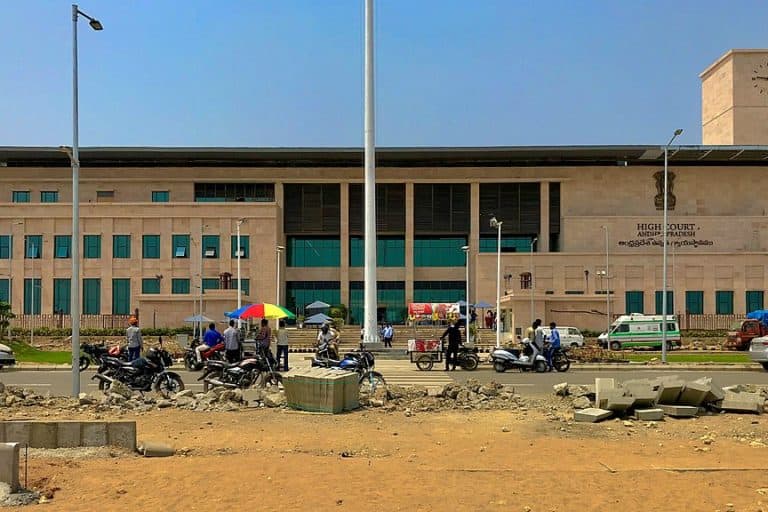Amaravati was promised as a dream come true – a utopia. However, the city, which was being developed as the new capital of Andhra Pradesh, now stares at a bleak future — after the pullout of major investors, as well as the lack of political will due to change of government in the state.
Less than 150 days ago, in April 2019, just days before the simultaneous elections in Andhra Pradesh for state legislative assembly as well as Indian parliament, the then Andhra Pradesh Chief Minister N. Chandrababu Naidu was announcing that Amaravati would be among the five best capitals of the world. But, he faced severe defeat in both the elections and today the construction work for his dream project has come to a halt.
During the 2019 elections, Yuvajana Sramika Rythu (YSR) Congress Party, which was the opposition, won 22 of the 25 parliamentary seats and 151 of the 175 legislative assembly seats in Andhra Pradesh. Soon after winning the elections in May 2019, Y.S. Jaganmohan Reddy of the YSR Congress party became the chief minister and said his government will probe the land scams in and around the Amaravati Capital region.
The murmurs of trouble in the project had started soon after the new government came to power as there was no surety of political and financial support to the project. However, the biggest jolt came in July 2019 when the World Bank announced its pullout from the project.
In a statement, the World Bank explained that the government of India withdrew its request to the World Bank for financing the proposed Amaravati Sustainable Infrastructure and Institutional Development (ASIID) Project. Thus, the World Bank’s board of executive directors were informed that the proposed project was no longer under preparation following the government’s decision.
It announced that it continues to support Andhra Pradesh with programmes worth over one billion USD that covers health, agriculture, energy and disaster management sectors, including a new USD 328 million support to the AP’s health sector (signed in June 2019).
“As the new government sets its development priorities, we stand ready to provide whatever support the state and the government of India might request,” the World Bank statement said.
The ASIID Project which needed an investment of USD 715 million involved USD 300 million funding from the World Bank, USD 200 million from Asian Infrastructure Investment Bank (AIIB) and USD 215 million from the AP government.
Following the World Bank pullout from the project, AP’s Finance Minister Buggana Rajendranath made a statement in the AP legislative assembly stating that in anticipation of the project approval from the banks the previous AP government (led by Naidu) had already launched projects worth Rs 2,819 crore (around USD 400 million).
Rajendranath informed that the Independent Accountability Mechanism (IAM) of the World Bank received a number of representations from landowners and non-governmental organisations about the problems in the Amaravati project and its adverse environmental, social and economic impacts.
The minister said that following these representations, the IAM launched an inspection panel that made several visits to Amaravati and recommended “carrying out an investigation into the alleged issues of harm and related potential non-compliance with livelihood restoration.”
“From all accounts, it is apparent that the previous government had completely ignored the adverse environmental, social, economic and financial implications of the new capital city developmental model. Moreover, the actions of the previous government have embarrassed the nation, as it is the first time that the independent panel of world bank recommended an investigation into a project that has not yet been approved by the World Bank board,” said the AP finance minister.
Within days of the World Bank pulling out of the project, came the news of the AIIB pulling the plug from the project as well. According to news reports, Laurel Ostfield, Director General, Communications for AIIB told Reuters in an emailed statement that, “AIIB is no longer considering the Amaravati Sustainable Infrastructure and Institutional Development Project for funding.”

Several official buildings are either under construction in Amaravati or have already come up. Pic: APCRDA
The need for a new capital city was felt after Telangana was carved out of Andhra Pradesh in June 2014. The earlier capital city of Hyderabad was designated as the joint capital for both the states for ten years, but within that time Andhra Pradesh had to find a new capital. Following that, the previous Andhra Pradesh government identified Amaravati, a place between Vijayawada and Guntur alongside the River Krishna, comprising 24 revenue villages and part of Tadepalli municipality of Guntur district, covering a total area of 53,748 acres.
Of the total 53,748 acres of land required for the capital city, 38,581 acres were targeted under the land pooling scheme launched by the state government while the rest was already owned by the state. As per initial estimates, about Rs 300 billion (Rs. 30,000 crore/USD 4.24 billion) were required for developing Amaravati but an official report in July 2018 pegged the necessary investment in the range of Rs 424.5 billion to 495 billion (USD 6 to 7 billion).
From a dream destination to one with an uncertain future
With the two major international banks pulling out of the project and the new Andhra Pradesh government also not backing it the way the previous state government was, the future of the project faces uncertainty.
Mallela Sheshagiri Rao, a Vijayawada based farmer and lawyer who is fighting against the project, said that “to support the project, the government needs money but there is no money at all.”
“YSR Congress-led government has allotted Rs 500 crores from the state’s budget this year for it – something that was never done by Chandrababu Naidu led government. The official buildings that have been constructed or under construction so far are the secretariat, Andhra Pradesh High Court, quarters of government employees, IASs and IPSs, MLAs and MLCs, judges and judicial employees. The Rs 500 crore allotted by the government in this year’s budget would be used to complete these projects. But the rest of the utopian plans about constructing big infrastructure won’t happen,” Rao told Mongabay-India.
“There is no money. About 40 percent of the farmers who signed the agreement for giving up their land have not done it so far. The land pooling scheme has no sanctity in the eyes of the constitution and even the court cases against the Amaravati project are pending. This project is not possible. There is an atmosphere of gloom around it. From being an area bursting with workers and construction activity today it resembles a ghost town. The work is simply dead,” said Rao.

Pulling out of banks from financing the Amaravati project will impact its progress. Photo by IM3847/Wikimedia Commons
In 2018, Mongabay-India had visited Amaravati and highlighted how the city faces protests from environmentalists, farmer groups, retired government officials and several other groups who are raising voices against the project, highlighting environmental issues like the impact on forests, water bodies, river Krishna and wetlands. They had alleged that the project is an environmental disaster in making it has not considered the impact of work near the floodplains of river Krishna.
In August 2019, the state is already having a glimpse of some of those dangers. For instance, the bungalow of N. Chandrababu Naidu, AP’s former chief minister and chief of Telugu Desam Party (TDP), located on the banks of river Krishna in Amaravati is facing a threat of submergence due to floodwater.
As per another news report, recently about 48 villages along the Krishna river bank in Guntur and Krishan districts were put on high alert after a huge amount of water was released in upstream areas and directions were issued to evacuate people from low lying areas to protect them from floods.
G. Rohith, an activist working with the Human Rights Forum, said, “though there seems to be high-level politics involved in the decision of the World Bank to drop the plan to provide funding for Amaravati, it in a way tells us a lot.”
“Amaravati was planned as a greenfield city that would be an aseptic city to the point of repulsion. However, the grand vision and dreams are cut short by the affected villagers’ complaint to the World Bank. If one goes through the preliminary report of the World Bank’s inspection panel one would find nothing about the catastrophic impact of this project. With the floodwater flowing from the upper riparian states, the flood plains of Amaravati are submerged as of today. One would find nothing of that sort in the report, let alone the possibility of flooding of the low lying Amaravati and the wisdom of constructing such a gigantic capital in black soil plains,” Rohith told Mongabay-India.
“Though the amount promised by the World Bank along with AIIB isn’t much, it might have a domino effect,” he said.
(This story was first published on Mongabay. It has been republished with permission. The original article can be found here.)